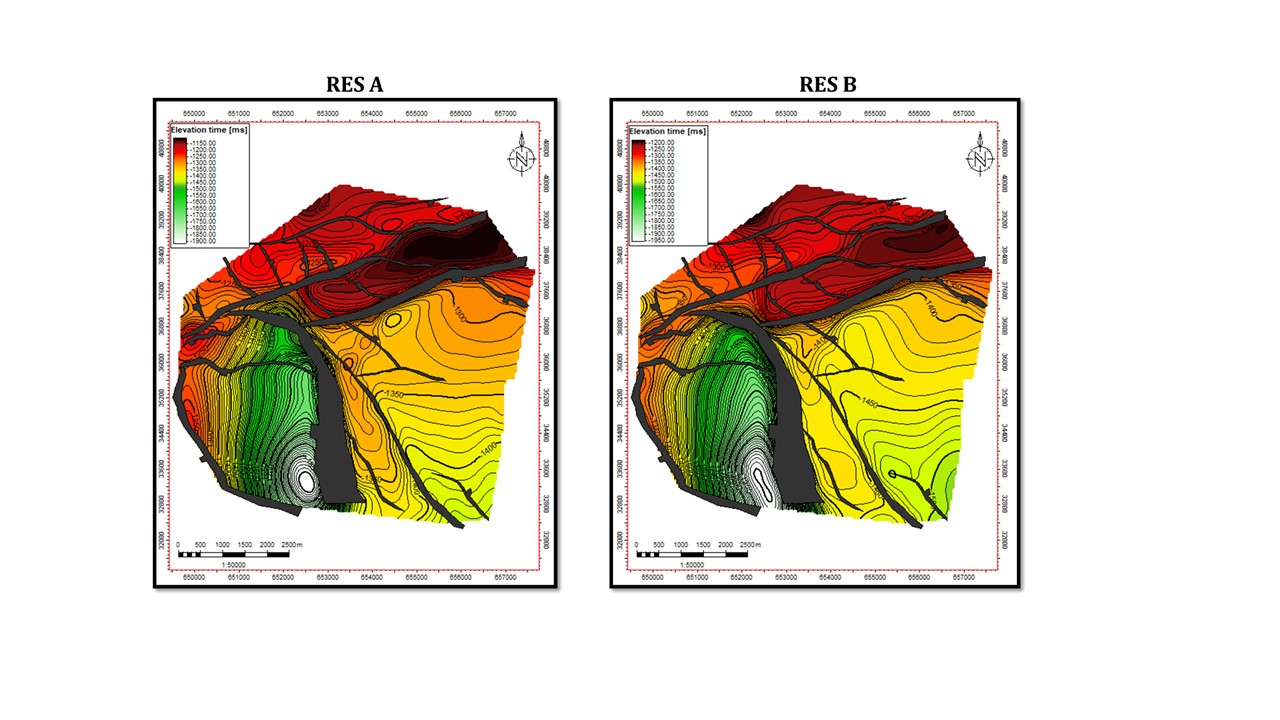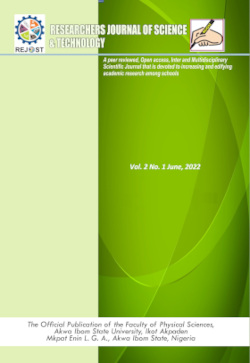Application of 3-D Seismic Attributes Analysis for Structural Characterization and Hydrocarbon Prospectivity in “TLB” Field, Southern Niger Delta, Nigeria
Keywords:
Seismic Attributes, Hydrocarbon Prospectivity, Reservoir Characterization, Niger Delta Basin, RMS Amplitude, Fault InterpretationAbstract
This study investigates the hydrocarbon potential of the TLB Field, located in the southern Niger Delta, using well logs and 3D seismic data. The aim of this study is to evaluate the hydrocarbon potential of the TLB Field in the southern Niger Delta by utilizing 3D seismic attribute analysis and well log data for structural characterization and reservoir assessment. Through the integration of seismic attributes such as root mean square (RMS) amplitude, maximum magnitude, and variance, this study seeks to delineate hydrocarbon-bearing zones, identify key prospects, and estimate hydrocarbon volumes. These study gives precise understanding of the structural framework and reservoir quality within the field unlike previous studies. We analyzed seismic attributes such as root mean square (RMS) amplitude, maximum magnitude, and variance to delineate structural and stratigraphic features indicative of hydrocarbon-bearing zones. The structural interpretation of the seismic data revealed the presence of listric growth faults that play a significant role in hydrocarbon entrapment. Two reservoirs, Reservoir A (RES A) and Reservoir B (RES B), were identified at depths ranging from 3300 ft to 6400 ft. Reservoir A exhibited superior reservoir quality, with a porosity of 24% and a hydrocarbon saturation of 85%. Bright spot anomalies served as direct hydrocarbon indicators (DHIs), pointing to potential accumulation zones. The study identified three key prospects, designated as K, L, and M, with an estimated total of 20.6 million barrels of oil equivalent (MMBOE) and 199.1 million standard cubic feet (MSCF) of gas. The findings indicate that additional hydrocarbon leads exist within the field, suggesting that further exploration is warranted to maximize recovery.
References
Adedayo, S., Ijeoma, T., Folake, M., & Daniel, O. (2022). Assessing reservoir quality and fluid distribution using seismic attributes in the Niger Delta. Energy Exploration & Exploitation, 40(4), 897–912.
Adegoke, O. S., Oyebamiji, A. S., Edet, J. J., Osterloff, P. L., & Ulu, O. K. (2017). Cenozoic Foraminifera and Calcareous Nannofossil Biostratigraphy of the Niger Delta. Elsevier.
Ahmed, T. (2010). Reservoir engineering handbook (4th ed.). Gulf Professional Publishing.
Akinloye, O., Olugbenga, O., Adebayo, S., & Chika, A. (2016). Application of seismic attributes for fault analysis in the Niger Delta. Journal of Geophysics and Engineering, 13(4), 852–867.
Ajisafe, O., & Ako, B. (2013). The application of seismic attributes in hydrocarbon reservoir characterization: A case study from the Niger Delta. Geophysics Journal International, 195(2), 354–368.
Avseth, P., Mukerji, T., & Mavko, G. (2005). Quantitative seismic interpretation. Cambridge University Press.
Bamidele, T., Samuel, O., Chika, S., & Oluwaseun, F. (2023). Challenges in seismic attribute analysis for the Niger Delta: Insights and solutions. Geophysical Journal International, 232(3), 1176–1190.
Craft, B. C., & Hawkins, M. F. (1991). Applied petroleum reservoir engineering (2nd ed.). Prentice Hall.
Dake, L. P. (2001). Fundamentals of reservoir engineering. Elsevier.
Dim, C. I. (2016). Evolution and petroleum systems of the Niger Delta Basin, Nigeria. Journal of Petroleum Exploration and Production Technology, 6(2), 371–382.
Doust, H., & Omatsola, E. (1990). Niger Delta. In J. D. Edwards & P. A. Santogrossi (Eds.), Divergent/passive margin basins (Vol. 48, pp. 239–248). AAPG Memoir.
Economides, M. J., Hill, A. D., & Ehlig-Economides, C. (1994). Petroleum production systems. Prentice Hall.
Ebong, E. D., Akpan, A. E., Emeka, C. N., & Urang, J. G. (2017). Groundwater quality assessment using geoelectrical and geochemical approaches: Case study of Abi Area, southeastern Nigeria. Journal of Applied Water Science, 7(5), 2463–2478.
Harry, T. A., Bassey, C. E., Udofia, P. A., & Daniel, S. (2017). Baseline study of estuarine oceanographic effects on benthic foraminifera in Qua Iboe, Eastern Obolo, and Uta Ewa/Opobo River Estuaries, Southeastern Nigeria. International Journal of Scientific and Engineering Research, 8(7), 1422–1331.
Harry, T. A., Etuk, S. E., Joseph, I. N., & Austin, O. E. (2018). Geomechanical evaluation of reservoirs in the coastal swamp, Niger Delta Region, Nigeria. International Journal of Advanced Geosciences, 6(2), 165–172.
Harry, T. A., & Akata, N. I. (2019). Evaluation of shale volume and effective porosity from wireline logs in “Watty” Field, Niger Delta, Nigeria. International Journal of Scientific & Engineering Research, 10(12), 1150–1158.
Ibrahim, S., Esther, O., Chuka, K., & Solomon, D. (2023). Integration of seismic attributes with remote sensing data for enhanced exploration in the Niger Delta. Computers & Geosciences, 133, 105616.
Law, W. K., & Chung, A. S. C. (2006). Minimal weighted local variance as edge detector for active contour models. In P. J. Narayanan (Ed.), Lecture Notes in Computer Science (pp. 622–632).
Lehner, P., & De Ruiter, P. A. C. (1977). Structural history of the Atlantic margin of Africa. AAPG Bulletin, 61(7), 961–981.
Nwankwo, E., Ijeoma, C., Daniel, A., & Bamidele, S. (2020). Evaluation of hydrocarbon prospectivity using seismic attributes in the Niger Delta. Energy Exploration & Exploitation, 38(6), 2112–2130.
Ojo, J., Adewale, T., Emmanuel, S., & Folake, K. (2018). Using seismic attributes to characterize faults and fractures in the Niger Delta Basin. Geophysical Prospecting, 66(1), 123–138.
Ochoma, S., Chinedu, A., & Uche, O. (2023). Comparative analysis of hydrocarbon-bearing trends in the Niger Delta: A case study of the Uzot and Fuba fields. Petroleum Geoscience, 29(1), 47–63.
Obi, C. A., Nwosu, J. I., & Ezeh, E. (2021). Structural interpretation and reservoir characterization using seismic attributes in the Niger Delta. Journal of Petroleum Geoscience and Engineering, 40(2), 102-115.
Oluwole, J., Bukola, A., Emmanuel, N., & Kemi, A. (2022). Application of advanced seismic attributes and data processing techniques in the Niger Delta. Journal of Applied Geophysics, 192, 104321.
Reijers, T. J. A., Petters, S. W., & Nwajide, C. S. (1996). The Niger Delta Basin. In T. J. A. Reijers (Ed.), Selected chapters on geology: Sedimentary geology and sequence stratigraphy of the Niger Delta (pp. 103–122). SPDC Corporate Reprographic Services.
Schlumberger. (2007). Interpreter’s guide to seismic attributes. Schlumberger Ltd.
Taner, M. T. (2001). Seismic attributes. Canadian Society of Exploration Geophysicists Recorder, 26(9), 48–56.
Whiteman, A. (1982). Nigeria: Its petroleum ecology, resources, and potential. Graham and Trotman

Downloads
Published
How to Cite
Issue
Section
License
Copyright (c) 2025 Researchers Journal of Science and Technology

This work is licensed under a Creative Commons Attribution-NonCommercial-NoDerivatives 4.0 International License.




